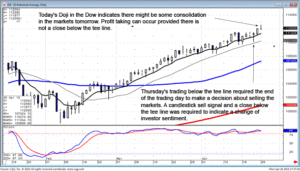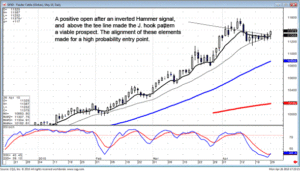Trading agricultural commodities is the province of agricultural producers and the likes of multinational grain companies. It is also the province of traders speculating on movements in the agricultural commodities markets. Both groups trading commodities rely upon fundamental analysis of the commodity in question and engage in technical analysis using technical analysis tools such as Candlestick chart formations in order to judge when to stay with a market trend and when to expect a market reversal. The world needs food but growing conditions, food transport and storage, and diversion of food stuffs into energy all affect availability and, therefore, commodity price. This mixture of facts and conditions drives pricing in the futures markets in agricultural commodities. Whether you are interested in trading corn futures or live cattle Commodities and Futures Training will be a good place to start.
The Traders
When you start commodity trading you will be up against the likes of traders working for companies like Cargill and Archer Daniels Midland. These multinational food companies know the fundamentals of the agricultural commodities markets as it is their business. They will, in fact, know fundamentals before you do. Although their advantage may only be minutes or even seconds they will cause market movement to which you will have to react. They are typically the drivers of the commodities markets in wheat, corn, soybeans and other products. You will be in the pack with other traders doing Candlestick analysis to predict market reaction to the trades made by the big money.
Why They Trade
There are two types of traders in agricultural commodities. There are the producers and the buyers who are hedging commodities and their investment risk. There are traders looking to profit on market movement. Farm cooperatives growing sugar beets and sugar producers who buy sugar beets or cane each buy or sell commodities futures contacts to lock in price at a future date. Because these folks know the market in their commodity they may well also trade for profit but their primary motive is to maintain a stable price for their product. The trader speculates on market movement and market reversal in looking to profit. The producers and buyers want a stable market. The pure trader would like to see lots of market volatility.
Why You Trade and Market Participation
When a farm cooperative has locked in what they consider a fair price for their sugar beets, corn, soy beans, etc. they will probably go back to the work of farming. Thus their strategy will be to make a single or single set of trades. When they are done trading volume in a commodity may go down if the producers and buyers are satisfied. Traders who are not in the business of the commodity may well keep tracking the commodity looking for market movement based upon news about the weather, new buyers, etc.
Deep Pockets, Strategy, and Cows on Your Lawn
Buying calls and buying puts on agricultural commodities is entirely possible. Typically the trader buys and the large company sells. Selling calls and puts is typically more profitable over time but can be costly on a single bad trade. Having deep pockets allows the big guys to do this while you leverage smaller holdings for potential large profit. You really want to get out of your futures position in agricultural commodities if you are not a producer or buyer. They will not come to your house and leave cows on your lawn but they will ask you to produce cows to sell or come and get them unless you exit your contract before expiration.
Market Direction
Utilizing candlestick signals allows an investor to start with a format where the probabilities can constantly be improved. This current uptrend clearly illustrates how using candlestick signals and other obvious analytical tools keeps an investor from being whipsawed in and out of positions. The basic rule, that a sustained uptrend requires a compelling reversal signal to indicate a trend reversal, has made this uptrend very profitable. Although there have been times that it appeared that investor sentiment may have changed, the simple combination of a candlestick sell signal AND a close below the tee line has not occurred.
Thursday’s trading produced a trading day that might have scared people out of the market, especially with the early trading well below the tee line. The obvious evaluation factor has been the trend moving up, consistently closing above the tee line. Take advantage of the information built into each candlestick daily formation. That information allows for decently accurate trend analysis. As long as the markets do not close below the T-line, the uptrend remains in progress. This may sound very simplistic but that is the result of the common sense aspects of candlestick analysis.

DOW
The tee line also becomes an excellent buying factor. There are candlestick patterns that can execute a trade immediately based upon a candlestick signal and a breach above the tee line. Today, May Feeder Cattle was bought based upon an Inverted Hammer signal on Friday. A positive open produced three results. First was the confirmation of the Inverted Hammer signal. Second, the positive open would be confirming trading above the tee line. Third, it would be setting up the possibility of another J. hook pattern.

May Feeder Cattle
The more indicators that can be put into alignment, the higher the probability of being in a correct trade at the correct time. Whether you are a beginning investor or a seasoned trader, candlestick signals work extremely well on their own or being applied to existing trading programs.
I mention how candlesticks improve the visual aspect of already successful trading programs because of my experience presenting candlestick analysis this weekend to the annual conference of the AAPTA. This association consists of some of the most high-powered names associated with technical analysis. John Murphy, Greg Morris, Bloomberg associates and many other nationally known technical analysts attended this conference. I felt my presentation on candlesticks was like teaching at a first grade level to college students. However, the feedback revealed that many there had not been exposed to candlestick signals in the manner which I had presented it. They could see how the information built into the signals and patterns could greatly improve what they were doing.
It was also very impressive to be associating with people that were very unselfish with the sharing of their knowledge. On top of that, everybody was very nice and a pleasure/fun to be with. Do not be surprised to see some new elements of technical analysis built into the member recommendations in the near future.
Chat session tonight at 8 PM ET.
Good Investing,
The Candlestick Forum Team
E-Book Blowout – Over $269 in eBooks for only $129 PLUS Bonus product valued at $129 FREE!
Website special reflects current newsletter. If you are reading an archived newsletter you will be directed to Current Website Special.
Speak Your Mind